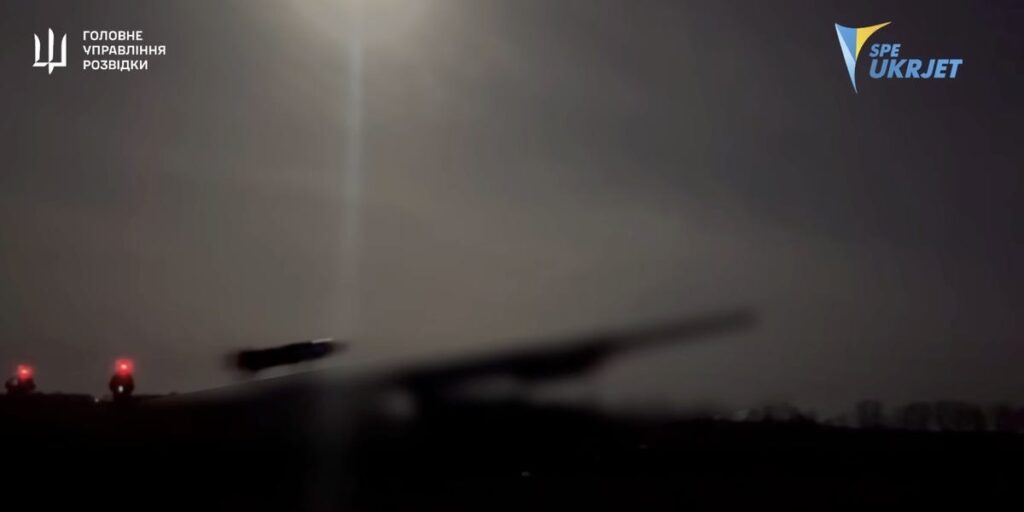Ukraine’s intelligence directorate (GUR) has released footage of Kyiv’s UJ-26 “Bober” drone being launched via catapult to attack Russian air defenses.
The video, published on Tuesday, shows the locally manufactured 8-foot-long loitering munition being slung into the air from a fixed ramp. GUR said its special forces launched the drones to attack targets in Russian-occupied Crimea.
The new launch method allows the fixed-wing Bober to enter combat without landing gear, which would likely improve its range or maneuverability. Traditionally, the Bobers take off from airstrips like traditional aircraft.
Given that the ramp would likely have to be set up in Ukrainian-held territory west of the Dnieper River, the drone would have to travel a minimum of roughly 60 miles to reach Russian targets in Crimea.
The drones also seem to be equipped with thermal cameras in several first-person view clips uploaded by the defense intelligence agency.
One montage appears to show a drone evading a missile and then flying into a $15 million Pantsir S-1 point air defense system. A second drone is also shown flying into the ground next to a Pantsir S-1 as the vehicle crew scrambles for cover.
GUR described the attack as the “successful defeat” of the Pantsir, but did not show footage of the results.
The intelligence agency also said it conducted similar successful attacks on three Russian radar systems — The Niobium-SV, the Pechora-3, and the Provotnik GE — as well as a fourth-generation Su-30 fighter.
It uploaded several first-person view clips of drones approaching these systems with thermal cameras, though many of them can only be seen flying close to their target.
Business Insider could not independently verify the damage caused.
Ukrainian media regularly describe the Niobium-SV as a $100 million system. Earlier Russian estimates from before the full-scale invasion indicated that the Kremlin was acquiring the Niobium-SV in 2016 for about $40 million per unit. However, these may have since been fitted with more expensive upgrades.
Meanwhile, one Bober, which translates to “beaver” in Ukrainian, reportedly costs around $110,000 to manufacture. The propeller drone is meant for long-range attacks and is known to carry the KZ-6 charge, a 6.6-pound demolition explosive designed to break through concrete or armor.
It’s yet another example of how the war has increasingly featured cheaper systems being used to attack and, at times, destroy expensive high-end equipment, posing difficult questions for the traditional defense procurement model that heavily prioritized advanced technology.
For example, one of Ukraine’s biggest community drone funds, run by activist Serhii Sternenko, reported to donors that its crowdfunded drones have damaged at least 11 Buk surface-to-air missile systems in 2025. The fund often publishes footage of such strikes.
Depending on whether they have the latest upgrades, these defenses can cost Russia between $10 and $100 million each. By comparison, Sternenko’s fund said it receives roughly $6 million in donations a month for its entire budget.
Read the full article here


